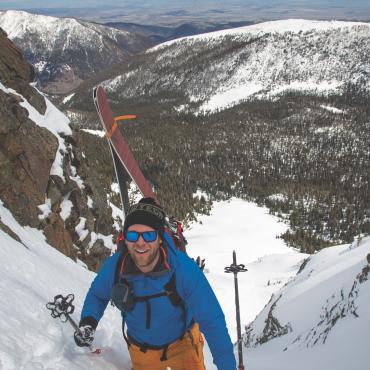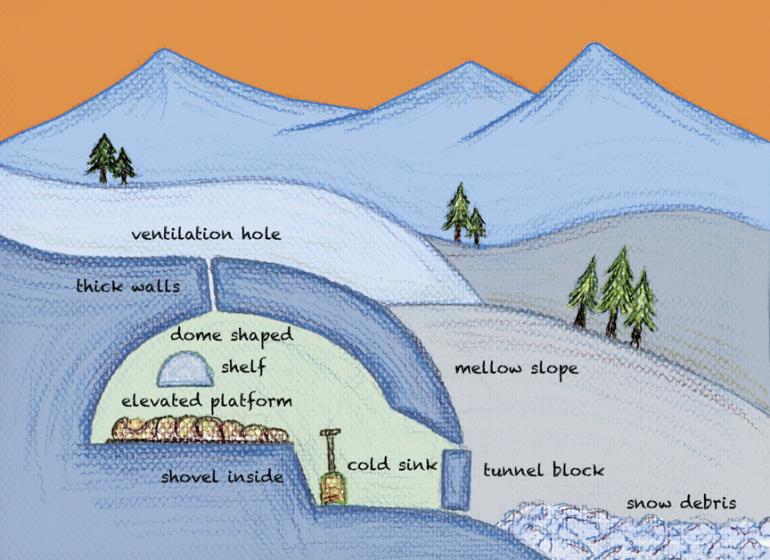Cave Dwellers
Snow caves are windproof, warm, and can accommodate several people. But improperly built caves can kill—trust me, I’ve written the obituaries. The carbon dioxide you exhale is an invisible, odorless, tasteless gas that accumulates in poorly ventilated caves and kills silently. Here’s how to build a cave that won’t put you at risk.
1. Select a site away from avalanche danger, cornices, or open water, with at least five feet of settled snow to work with. A deep wind drift on a mellow slope is ideal, as you can push excavated snow downhill as you work.
2. Prepare to dig for two to four hours. This means donning a waterproof shell, gloves, and a hat—dry equals warm. Don’t allow yourself to become soaked.
3. Using an avalanche shovel, dig a trench downward into the hillside or drift. Tunnel horizontally into the snow (a body length, if possible). Your tunnel should be just larger than body width, and should angle upward. The goal is to make the tunnel the cave’s lowest point—a cold “sink” that will prevent warm air inside the cave from escaping.
4. Dig your elevated sleeping platform level with, or above, the top height at the end of the tunnel. Moving snow out becomes the biggest task now. Use your shovel in front of your body and push snow out of the tunnel with your feet.
5. As the cave takes shape, keep in mind that thicker walls are warmer and more stable, and that you should leave at least a foot of snow on all sides. The cave should be dome-shaped, smooth, and large enough for you to sit upright. Any sharp edges or ridges will drip once the cave warms up, so smooth all overhead surfaces by hand.
6. Use a ski pole, avalanche probe, or stick to make ventilation holes, and leave the instrument in place—wallow out your breathing holes frequently, particularly if it’s storming. Dig a shelf in one wall for a small candle (one can warm up the inside of a snow cave by as much as 20 degrees).
7. Always keep your shovel INSIDE the cave, in case of collapse, or to dig out of new snow in the morning. Plug the tunnel with a backpack or block of snow, and enjoy a warm, restful night in the snow.
Drew Pogge has slept in the snow more nights than he cares to admit. From unplanned bivvies in Alaskan blizzards to cozy Glacier National Park base camps to “just-because” nights in the Bridgers, he’s learned to appreciate the simplicity of snow caves and the shelter they so easily provide.











